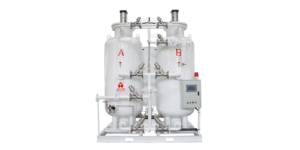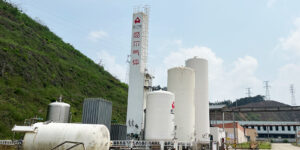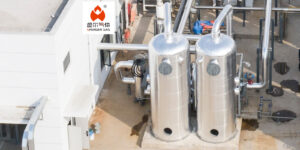In the realm of cryogenics, liquid nitrogen holds a place of reverence, often hailed as the workhorse of low-temperature applications. It’s a substance that, at first glance, might seem like a science fiction element, but it is, in fact, a common and incredibly useful part of modern science and technology. This article delves into the frigid depths of liquid nitrogen, exploring how cold it really is, its properties, and the myriad ways it impacts our world.

The Temperature of Liquid Nitrogen
At its boiling point, liquid nitrogen reaches a staggering -196 ℃(-321℉). This extreme cold is due to nitrogen’s low boiling point, which requires temperatures well below the freezing point of water to transition from a gas to a liquid. The process of cooling nitrogen gas to liquid form involves high pressure and low temperature, a feat achieved through the use of specialized equipment that compresses and cools the gas in stages.
Properties and Precautions
Liquid nitrogen’s remarkable cold makes it both incredibly useful and potentially hazardous. Its capacity to rapidly freeze anything it contacts is leveraged in various applications, from culinary arts to medicine. However, this same property necessitates stringent safety measures. Direct contact with liquid nitrogen can cause severe frostbite, and the rapid expansion of nitrogen gas (when it warms and turns back into a gas) can create explosion hazards if not properly vented.
Uses of Liquid Nitrogen
The applications of liquid nitrogen are vast and varied, spanning multiple industries. In the medical field, it’s used for cryopreservation (freezing and storing cells, tissues, or organs), cryotherapy (treating abnormal skin cells), and in the preservation of blood, sperm, and eggs. The culinary world has embraced liquid nitrogen for flash-freezing foods and creating dramatic fog effects in presentation. In the realm of science and engineering, it’s utilized for cooling materials to study their properties at low temperatures, as well as in certain types of rocket fuel and electronics cooling systems.
Environmental Impact and Safety
Liquid nitrogen is environmentally benign, as nitrogen makes up about 78% of the Earth’s atmosphere. Its use does not deplete atmospheric nitrogen nor does it contribute to greenhouse gas emissions. However, the production of liquid nitrogen requires significant energy, usually sourced from electricity, which may have an environmental impact depending on how the electricity is generated.
Safety in handling liquid nitrogen is paramount. It requires insulated gloves, face shields, and proper ventilation to prevent asphyxiation risks in enclosed spaces. The rapid expansion of nitrogen from liquid to gas can also displace oxygen in the air, creating a suffocation hazard.
The cold world of liquid nitrogen is not just a marvel of modern science but a testament to human ingenuity in harnessing the elements of nature for advancement. Its bone-chilling temperature, while presenting hazards, offers a gateway to innovations across various fields. Whether it’s in preserving the very building blocks of life, enhancing the culinary experience, or pushing the boundaries of scientific research, liquid nitrogen continues to prove its invaluable role in our quest for knowledge and progress.








